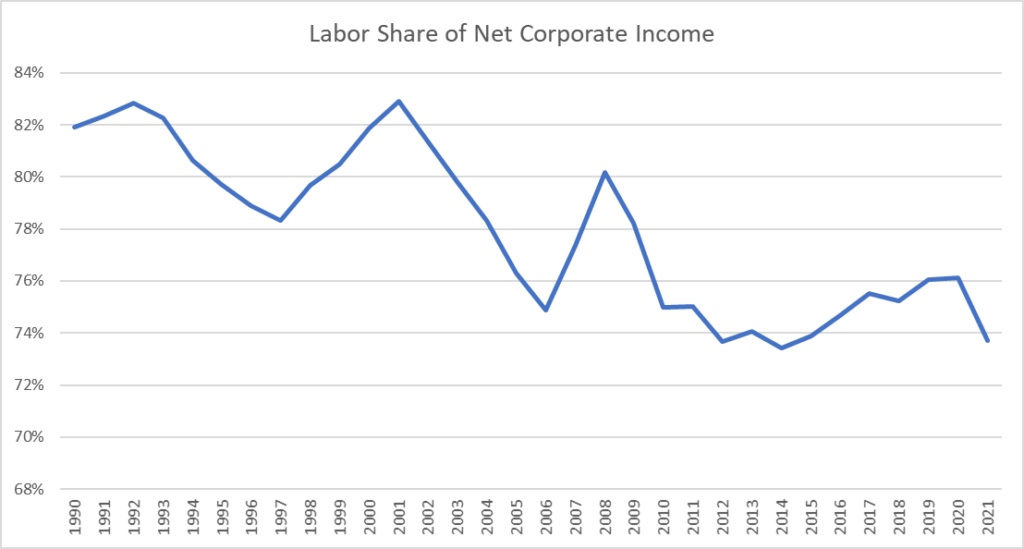If Wage Growth Is Driving Inflation, Why Is Workers’ Share of Income Falling? Dean Baker
0 views
Skip to first unread message
June Zaccone
Apr 24, 2022, 12:02:45 PM4/24/22
to goodjobs list
If Wage Growth Is Driving Inflation, Why Is Workers’ Share of Income Falling? By Dean Baker April 21, 2022
This Isn’t — and Can’t Be — 1970s style inflation
A popular line on our recent surge of
inflation is that an over-tight labor market has led to rapid wage
growth, which in turn forces companies to raise prices. Higher prices in
turn lead workers to demand higher wages, which will give us a
wage-price spiral and soon lead to double-digit inflation.
While this was a story that plausibly fit
the data in the 1970s, it is very hard to make the wage-price spiral fit
the current situation for a simple reason: The wage share of income has
fallen sharply since the pandemic. By wage share I mean total
compensation to workers, including fringe benefits, not just cash wages
and salaries.
Here’s the picture:

As can be seen, the wage share of corporate
income had been recovering gradually from the troughs it hit in 2014
following the Great Recession. However, we see a sharp reversal in
2021, with the wage share falling from 76.1% to 73.7%, a decline of 2.4
percentage points.
Perhaps some economists can tell a story
where rapid wage growth is driving inflation even as the wage share of
income is falling, but I’m not that good an economist. [Editor’s Note:
“Good” as in dishonest.]
This still looks to me like a case where
supply-side disruptions, associated with the economy reopening from the
pandemic together with the war in Ukraine are driving inflation.
This view is consistent with the fact that
year-over-year inflation in the European Union was 7.5% as of March. The
EU countries did not have as big a stimulus as the United States and by
most measures the EU labor market is not as tight as in the United
States.
--
Reply all
Reply to author
Forward
0 new messages
